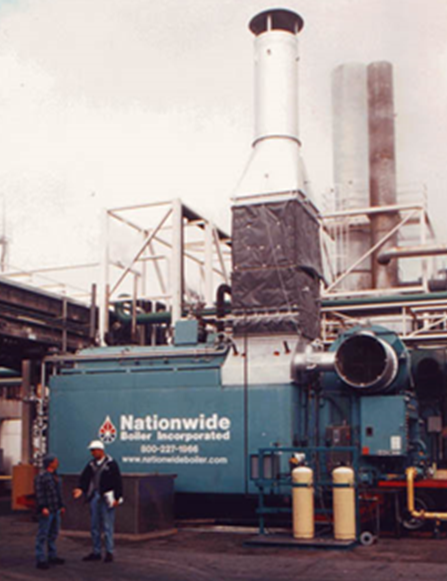Nationwide Boiler’s 2020 trade show tour officially begins next week, and we will be exhibiting at four separate events in the first quarter of the year. We aim to attend multiple industry focused conferences and tradeshows to showcase the many products and services we have available to each industry, and these upcoming events are ones you won’t want to miss.
That same week we will be exhibiting at the Food Processing Expo, conveniently being held right in our backyard. Typically, a Sacramento based show, the Food Processing Expo is scheduled for Feb 12th - 13th at the Santa Clara Convention Center this year only and will feature a dynamic and exciting array of speakers and workshops. Nationwide Boiler has been providing products and services to the food processing industry for over fifty years and CLFP provides a great opportunity to engage directly with the industry. Representatives from all three of our divisions will be in attendance and ready to discuss your next project - don’t forget to visit us at booth #2128!
Next in line we have Northwest Food & Beverage World, which will take place at the Convention Center in Spokane, WA from February 17-19. This year’s event will include more than 300 booths and over 30 different educational sessions filled with vendors and key speakers representing the food and beverage industry. The food processing industry relies heavily on companies like Nationwide Boiler to provide temporary steam for seasonal production, and we are always ready to support both planned and unplanned projects. We can also provide new and reconditioned boilers, BMS/CCS controls upgrades, and CataStak SCR systems for ultra-low NOx compliance. If you will be attending the show, stop by and check out our booth #1330 to visit and meet with Mike Dorthalina and Matt Pope of Pacific Combustion Engineering, a division of Nationwide Boiler Inc.
The final show of the quarter is the Western Regional Boiler Association (WRBA) Conference from March 31st - April 2nd at the Coeur 'd Alene Resort in Idaho. Another great platform for boiler owners and vendors to come together and discuss updates within the industry. The event will be jammed packed entertainment and education - with 15 different educational presentations that cover a wide range of topics, a casino night, and a dinner cruise on Lake Coeur 'd Alene.
Stay tuned on our social pages for further announcements and photos from each event. We look forward to meeting you this year!



 It all began when Nationwide Boiler chose Selective Catalytic Reduction, or SCR technology, to be their solution to NOx compliance. They determined that SCR was the best alternative due to its reliability, ease of operation, high efficiency, and its ability to reduce emissions to single digit NOx levels. In 1999, Nationwide Boiler became the first rental boiler company to conduct an SCR field demonstration on a package watertube boiler and followed by utilizing the system heavily in their rental fleet. The enormous success of rental SCR systems suggested to company management that a market existed for a field-retrofit system for package boilers - later to be branded and trademarked in 2001 as the CataStak™ SCR System.
It all began when Nationwide Boiler chose Selective Catalytic Reduction, or SCR technology, to be their solution to NOx compliance. They determined that SCR was the best alternative due to its reliability, ease of operation, high efficiency, and its ability to reduce emissions to single digit NOx levels. In 1999, Nationwide Boiler became the first rental boiler company to conduct an SCR field demonstration on a package watertube boiler and followed by utilizing the system heavily in their rental fleet. The enormous success of rental SCR systems suggested to company management that a market existed for a field-retrofit system for package boilers - later to be branded and trademarked in 2001 as the CataStak™ SCR System.